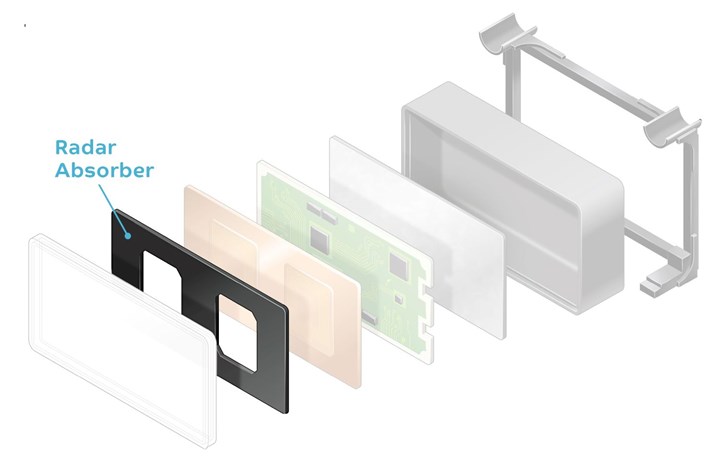PBT-based Compounds with Radar Absorption Properties
SABIC announced polybutylene terephthalate-based composite materials with application in assisted driving systems.
SABIC announced two new composite materials with applications in the automotive sector. LNP STAT-KON WDF40RID and WDF40RI are polybutylene terephthalate-based with 20% glass fiber and proprietary filler.
The compounds address a key challenge of millimeter wave radar technology for advanced driver assistance systems. The high dissipation factor of the material provides efficient absorption, minimizing interference. Compared to other semi-crystalline glass filled materials, SABIC’s new glass fiber-reinforced grades deliver higher absorption and lower reflectivity. In addition, they offer ultra-high flow and very low warpage, empowering customers to create new designs for internal and external single-layer absorbers, or to optimize traditional metal-backed absorbers.

The radar absorbant component reduces interference.
Photo Credit: SABIC
The LNP STAT-KON WDF40RID compound exhibits high absorption (up to 75 percent at 77 GHz) and controlled reflection (as low as 25 percent at 77 GHz), which together can significantly reduce noise. By maximizing noise dissipation, the new compound can help minimize ghost images and sidelobe interference, resulting in greater ADAS radar resolution and accuracy.
The LNP STAT-KON WDF40RI compound is formulated for metal-backed radar absorbers. LNP STAT-KON WDF40RI compound can raise radio wave absorption to nearly 80 percent, while lowering reflection below 20 percent, and provide total shielding when working with metal backs.
Both grades’ noise shielding performance is consistent across mmWave frequencies between 75 and 110GHz.
Incumbent radar absorber materials typically exhibit high viscosity and reduced flow stemming from the use of conductive additives, placing a design constraint on thin-wall internal absorbers or large external absorbers that surround the radar sensor. The LNP STAT-KON WDF40RID compound has an improved flow rate enabling walls down to 1mm for interior radar absorbers that can free up space for additional electronics.
Related Content
-
Soft Prices for Volume Resins
While PP and PE prices may be bottoming out, a downward trajectory was likely for all other volume resins, including engineering types.
-
Prices Up for All Volume Resins
First quarter was ending up with upward pricing, primarily due to higher feedstock costs and not supply/demand fundamentals.
-
Prices of Volume Resins Generally Flat or Lower
Exceptions in early March were PP and PS, which moved up solely due to feedstock constraints, along with slight upward movement in PVC and PET.














